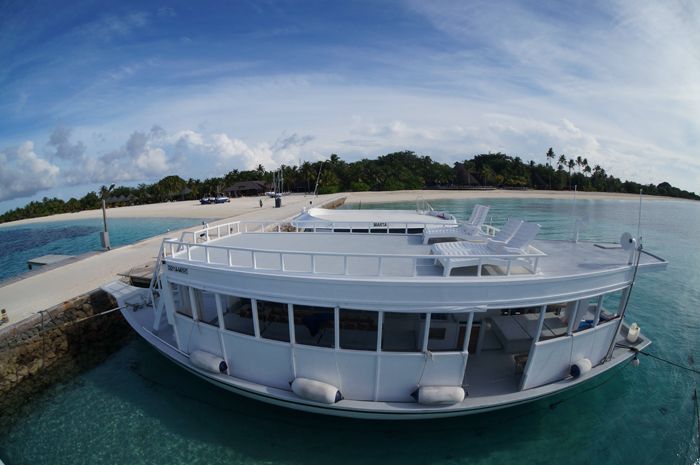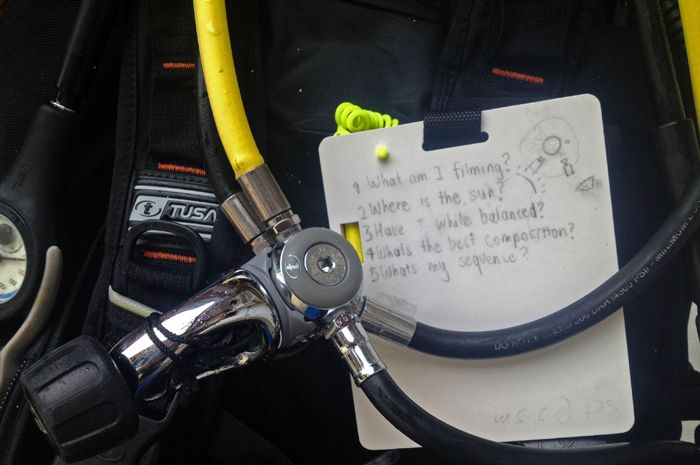Most people would come to The Maldives for a relaxing and romantic getaway. My experience so far has been quite the contrary. Each day of filming has built on specific lessons learnt from the day before both underwater and in the video lab. For every hour of footage you may take underwater, there are several hours involved of reviewing, cutting, sorting and editing that need to be done to ensure you know your footage, find out what worked, what didn’t, figure out ways to improve and build a plan for the next day.

In just a few weeks, I’ve been trained to think differently underwater which has changed my filming and diving style completely. Before I hit record, I will ask myself 5 questions to prepare for each shot:
1. What am I filming?
A familiar sight on any populate dive site is the flailing into diver violently waving his or her GoPro in every direction, enthusiastically trying to capture the experience of a lifetime all in one go. As tempting as it often can be underwater to “catch it all”, I’ve learn the importance of choosing a subject, sticking with it, and then of course…letting it go*.
*See question 5
2. Where is the sun?
The first thing I was instructed to do here was give my video lights a break and make use of the ambient light to bring out the natural colours the tropical waters of The Maldives have to offer. However it is crucial to ensure the sun is always directly behind you and reflecting off your subject(s). This question does seem to be a basic and simple one, but can be tricky at times, especially when there might be a bit of current and your subject is moving.
3. Have I white balanced?
There is no surprise that colours vary vastly with depth. It is possible to account for this variation by manually adjusting the white balance on your camera to tell it ‘what is white’. This step is traditionally done with a white underwater slate, but was actually a big hurdle with my camera setup. With many other Sony NEX users having the exact same issues posted on multiple underwater video forum threads, we were determined to work it out. It took the best part of my first week here to get it right, but we eventually figured out a specific type of brown coral to white balance on which produced best results. I won’t go into all of the details now, but I will be posting a separate video on this topic soon.
4. What is my composition?
Camera position needs to be considered carefully to provide an uncongested background, frame the subject appropriately and get the right angles for each frame and this can prove to be challenging at times believe me.
5. What is my sequence?
Each scene I shoot needs to have a story to tell, a purpose and a sequence. An approach is important to introduce the subject. If there’s no action I need to ‘make the action’ instead of producing a ‘wallpaper shot’. Close ups can really express emotion and I need to think carefully how each piece will fit together to build the ‘big picture’. Finally, and one of the biggest tips that has improved my video footage a great deal, is learning to ‘let things go’ and allow the subject to move out of the frame as I hold the camera still (I.e. close up batfish and shark shot in my latest video).

As I continue to ask myself these questions underwater, and learn to follow these procedures, I am finding my style of diving and underwater filming is changing completely. Admittedly, I am finding myself using more air than I am used to, but at the end of the day my footage seems to be getting better and better. I will be expanding on some of these points and a few of my other experiences in this magical country in future videos, but for now here’s a short clip to give you a quick impression of diving in The Maldives.

